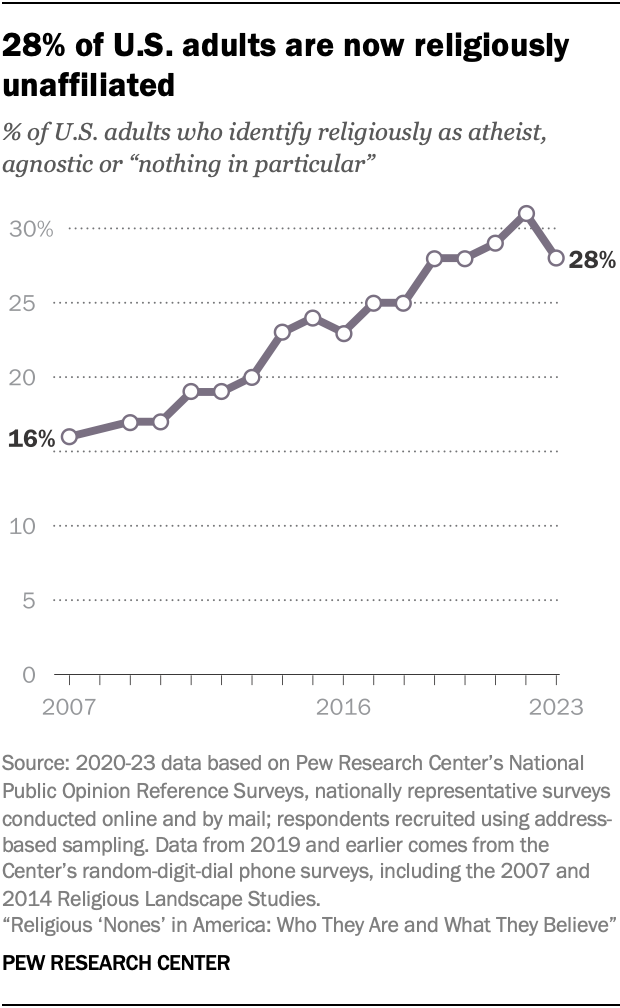In Pew Research Center’s 2023 polling, 28% of U.S. adults are religiously unaffiliated, describing themselves as atheists, agnostics or simply “nothing in particular” when asked about their religion.
That’s marginally lower than our surveys indicated in 2022 and 2021, and identical to what we found in 2020 and 2019, which raises a question: After decades of sharp growth, has the rise of these religious “nones” ended?
At the risk of sounding wishy-washy, we think it’s too early to tell.
The identical results we’ve found in three of the last five years are a sign of stability in the size of this population. At the same time, in two of the last five years, we obtained readings above 28%. In 2022, our estimate of 31% was 3 percentage points higher, while the 29% we recorded in 2021 was just 1 point higher. We haven’t found any readings below 28% in the past five years.
Related: Religious ‘Nones’ in America: Who They Are and What They Believe
So, although it’s possible that the “nones” have leveled off, it’s also possible that their growth has continued, but at a gradual pace that is difficult to see in the data due to the natural fluctuations that can occur in survey estimates. For example, there was a prior, slight dip in religious “nones” in 2016, quickly followed by a resumption of the long-term, upward trend.
These kinds of trends are best assessed over the long haul, based on many survey readings. After all, every estimate from a probability survey comes with a margin of error. Furthermore, it’s always possible that any single survey could be an outlier – that is, any one survey can defy the odds and produce an estimate that differs from the “true” value by more than the margin of error.
Placing too much weight on any single year’s reading could lead to erroneous conclusions. In hindsight, it clearly would have been premature to conclude that the 31% of respondents who identified as atheist, agnostic or “nothing in particular” in 2022 signaled an acceleration in the growth of the “nones.”
In the same way, it’s premature to conclude that this latest data point means the rise of the “nones” is over. The growth of the religiously unaffiliated may have slowed or even ended. But we will need at least a few more data points to be sure.
Pew Research Center will continue monitoring the religious “nones.” Soon, with more data in hand, we’ll be in a better position to judge whether the 2023 estimate marked a turning point for the “nones” or was just a blip on the way to continued growth.





